Ambling through a vineyard deep in the Dordogne countryside, the views are an oil painting come to life. A vibrant blue sky with cotton ball clouds. A majestic French chateau in the distance. Rolling hills with lines with complementing shades of green in the background, and rows of vines and wildflowers in the fore. I’m lost in the moment when owner Gilles Detilleux stops me.
“Watch where you step – that’s a wild orchid right there,” he gently says, pointing to the purple-pink tongue-orchid. Its presence, he explains proudly, is a testament to the health of his organic vineyard. “Organic winemaking is largely learning how to respect the land,” he says.
“Biodiversity helps us avoid problem diseases and the stresses on the plant.”
As we tour Domaine de la Tuque, we chat about his time in Westport as an exchange student, and how he and his business partner Vincent Rivaud spent the last decade reviving Abouriou – a once-popular regional grape that faced near-extinction – alongside more commercial grapes that are favoured by modern palettes: Merlot, Colombard, Cabernet Franc.
RM Block
Theirs is a typical tale of Dordogne: take centuries of expertly-cultivated traditions, add a bit of modernity, et voilà – they’ve an offering that’s ready for today’s international stage.
Dordogne is found in the heartlands of southwest of France, east of Bordeaux and north of Toulouse. Its geography is dominated by rustic villages and market towns; and its economy by family-run farms and enterprises. To dive into a largely untouched slice of French countryside, dotted by excellent restaurants, historic chateaux and sun-dappled river walks, this is the place to come.
It helps that while it’s flanked by major cities, it’s sparsely populated – the largest town is Périgueux with about 30,000 residents. “When it comes to selling our products, markets like in Monpazier are tiny, but they’re busy as there are no big cities nearby. It’s like Westport to Dublin.” says Detilleux. “But mass producers are available too, so we need to modernise while also showing the quality of artisan produce.”
I ask if he’s returned to Westport since his stay there. “I’ve had no time to,” he says, half-under his breath. “I have to stop this crazy job.”
He’s not the only producer rethinking old practices for the modern age. Another case in point proves itself later that day, in the chestnut grove of Domaine de Rapatel: a 6.5 hectare field of neat rows of trees in the forestry area of Villefranche du Périgord. Its owner, Tanguy de Rosando, comes out to greet me from the kitchen where he and his wife are currently brewing chestnut beer.

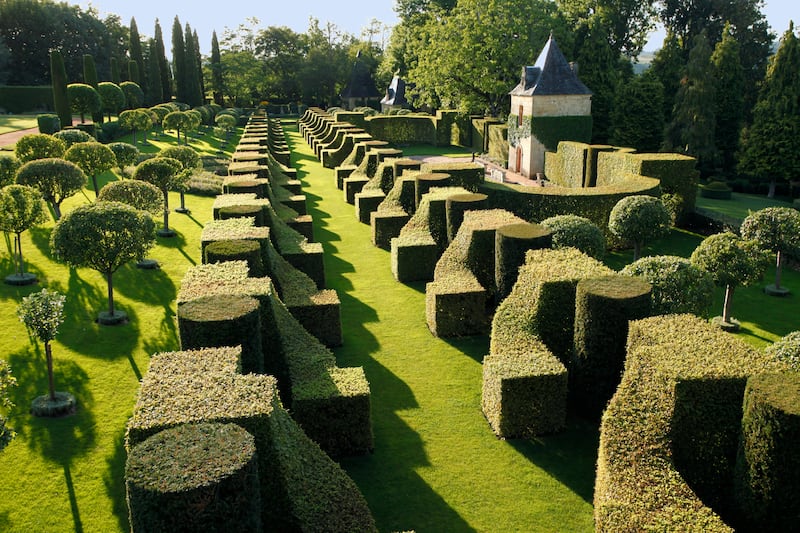
Yes really. Since becoming its owners five years ago, it’s the latest invention in their ever-expanding line of chestnut produce: their shop also sells home-made chestnut pasta, flour, jam, liqueur and spread – who said chestnuts need only be roasted on an open fire.
My home for these idyllic few days is Domaine de Rochebois, a five-star hotel deep in the Dordogne, where an old-meets-new outlook is applied to a luxury setting. A former a religious order base, then an orphanage, then a private home, it refurbished and opened its doors in 2022 as a homely 40-room hotel with golf course, spa and a spectacular terrace with views that stretches out to the River Dordogne and the countryside beyond.
While keeping much of its historical (and distinctly Gallic) charm – for example, the pristinely manicured French gardens, and traditionally decorated rooms – the modern touches appeal to me. The cast-iron cartoonish figures dotted around its estate are fun and surprising, but it also extends to less obvious things, like the pin-drop quiet aircon (I’m clearly still traumatised after sleeping by a roaring one in the States).
In the fine dining restaurant of M – adorned with panelled white walls, sparkling chandeliers and elegant waiters in crisp white shirts – the choice is between three tasting menus: animal world, heart of the ocean and naturalness. Can confirm as a vegetarian: this concession to different diets is a minor miracle in France, even before considering the quality with which they turn out the dishes, like the pan-fried asparagus served with a peach sauce and an array of microherbs and edible flowers that make me reassess my previous resistance to formal dining.
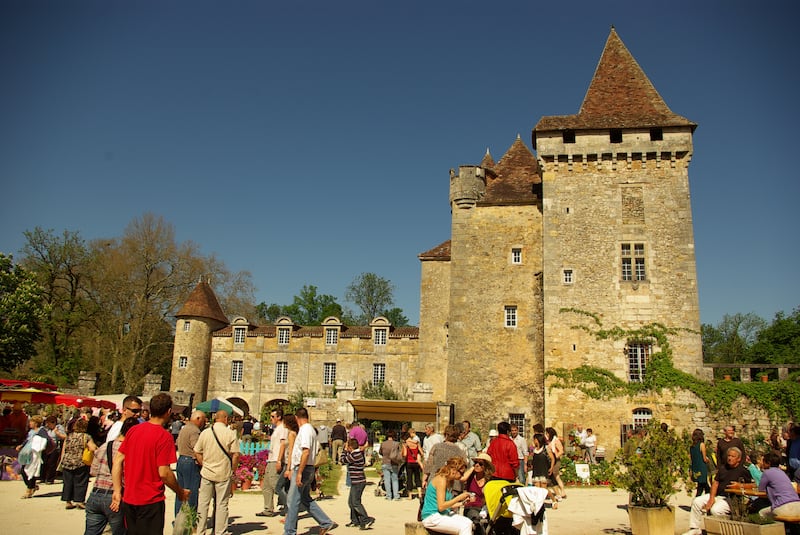
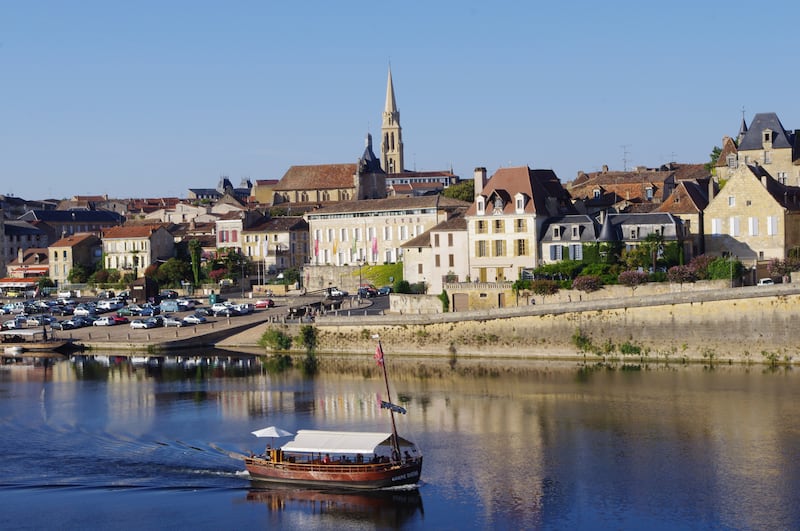
Even long-standing French restaurants, where tradition is usually protected at all costs, are carefully modernising. I find this out on an evening out La Roque Gageac, a 10-minute taxi ride away from Domaine de Rochebois. La Roque Gageac is often mentioned as one of the most beautiful villages in France, and it’s making the most of its looks in this golden hour. Look one way, and the river flows calmly against a bucolic backdrop of trees and the rolling hills beyond; look the other way, and it’s a wall of limestone rock faces, with majestic houses protruding from their stony surface.
Along the main strip, I step into La Belle Etoile, an unfussy hotel whose restaurant has earned a Michelin Bib Gourmand. Regis Ongaro is the third generation of owners and chefs, and I catch glimpses of his 23-year-old son in the kitchen too. The dishes have largely stayed the same since from his grandparents’ time, Ongaro tells me through a translator. The ingredients are largely local and seasonal – Dordogne is the biggest producer of ingredients like walnuts, for example, and is well-known for its foie gras – but there are small concessions to today’s palette.
Namely, he’s less liberal with the butter than his predecessors – not that you could tell from my friend’s exquisite dish of sole served atop a light foam and vegetables with the perfect amount of bite.
It’s clear, as we traverse through groves, fields, up gentle hills and past grand houses (one of which was owned by Josephine Baker, the French actor and singer, and a local hero), that while rooted in its past, Dordogne has all the charms of the past, just without the pitfalls. That said, some residents are inevitably progressing faster than others.
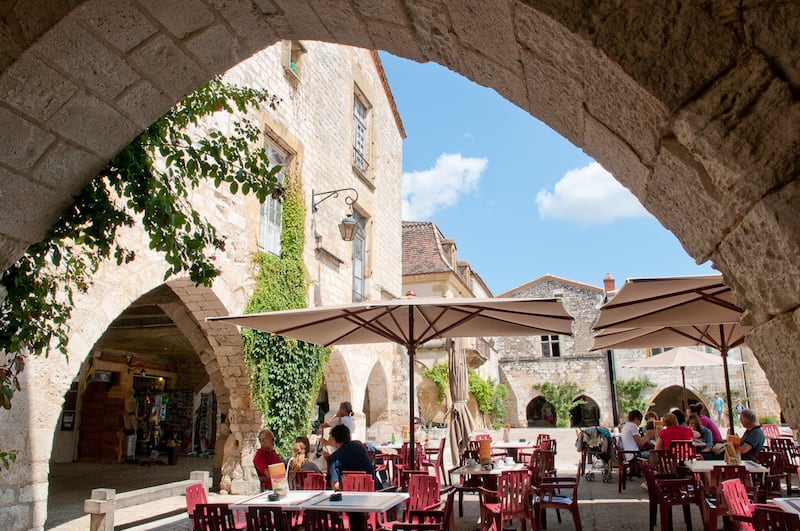
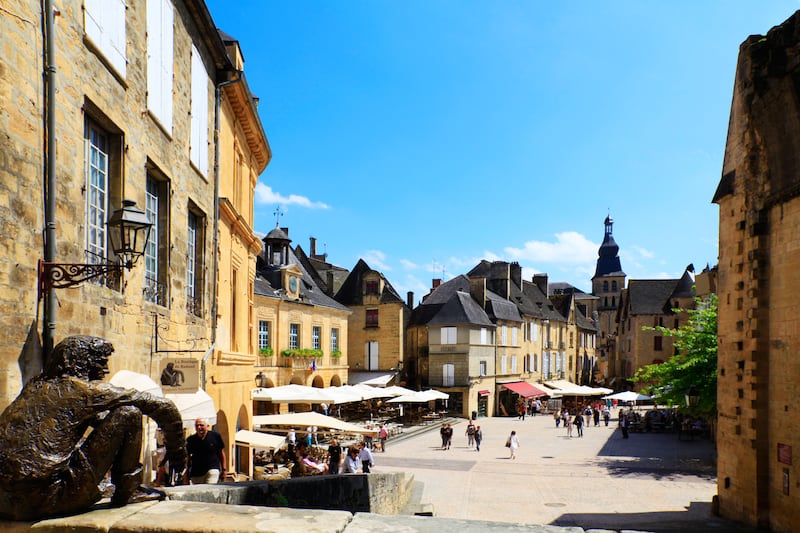
The holiday village of Sarlat is a well-kempt, busy holiday town thanks to the large proportion of second homers – it was once an English territory and its international feel remains. It’s the only place on my travels in Dordogne that feels in any way touched by tourism. Shops sell trinkets, jewellery and home-pressed hazelnut oil – all excellent gifts for loved ones at home (though fail-safe options like magnets, water bottles and T-shirts are available).
It’s in the fringes of the town centre that I spy the bakery of Maison Lissajoux, and I’m tempted in thanks to the rows of perfectly spaced, glossy pastries on show next to rustic, flour-dusted bread. This morning, it’s busy with locals catching up, visitors treating themselves, and families spending quality time together.
The bakery, which opened in July 2020, is run by Jean and Nicolas Lissajoux, partners in both professional and personal life. They swapped their careers in London as the GM for the Goucho Club (Jean) and as a designer for the NHS (Nicolas) to retrain and relocate here; both have family nearby.
“I know how to pick my location – Sarlat is in many ways the highlight of southwest France,” Jean says as I tuck into a patisserie ‘egg’: a gloopy passion fruit and mango coulis centre around a light coconut meringue, covered by a thin layer of speckled white chocolate. “Sarlat one of the best-kept medieval cities, it has excellent ingredients that change according to season, and lots of tourists. It’s a little gem.”
[ 20 great holiday destinations to visit in 2024Opens in new window ]
While some patisseries look to them for ‘inspiration’ (photos aren’t allowed in store, after a competitor began recreating their concoctions), more traditional ones aren’t enamoured of their contemporary twist. “But we think we recreate a bit of the UK here and mix it with the local. And that’s part of the Dordogne story – this part of France has always been influenced by the English, and today you have something like 10,000 British citizens living here.”
From my many experiences here, that’s Dordogne all over: it has its own character steeped in centuries of history, but very much for the better, it’s remained welcoming to outside influence. As I finish the last mouthful of the coconut meringue and citrusy coulis, it transpires that the proof is indeed in the pudding.
- Shilpa was a guest of Domaine de Rochebois and Dordogne Tourism
- Prices at Domaine de Rochebois begin at €175 in low season. See rochebois.com and dordogne-perigord-tourisme.fr for more information





















